It’s a great time to be a PC gamer! While we may aspire and salivate after the technical wizardry of a GeForce GTX 580 with DirectCU II, few of us can afford one. That’s cool though, because Nvidia just launched its best budget GTX to date: the GeForce GTX 550 Ti.
Packing 192 shaders and 1GB of GDDR5 memory, the GeForce GTX 550 Ti is a formidable upper-mainstream card. If you keep an eye on the graphics game, you may notice that on the surface the core specs are identical to the ENGTS450 Top (GeForce GTX 450) we previously covered, however there are some slight differences.
The ROP (Raster Operations Pipeline) count has been increased from 16 to 24, which also means more pixels can be churned out to screen per clock cycle, and the memory bandwidth has increased from 128-bit to 192-bit. Coupled with 10% faster GDDR5 and the GTX 550 Ti has a double-whammy of faster memory performance versus its older brother, the GeForce GTS 450.
The core clock speeds have been vastly improved too – while the GeForce GTS 450 languished at 783MHz (1,566MHz shader), the stock clock for the GeForce GTX 550 Ti is pushed all the way to 900MHz (1,800MHz shader). As ever though, ASUS has taken this one step further thanks to its improved engineering (Super Alloy Power hardware with protection from Fuse Guard and a PCB reinforcing bracket) and pushed the clock frequencies to a huge 975MHz (1,950MHz shader): an 8% improvement. Remember that’s just ‘out the box’ mind you; with a bit of home tweaking using its ever present Voltage Tweak and the core clock can be pushed as far as you can get it. Since ASUS also sells an ‘Ultimate’ version of its GeForce GTX 550 Ti that’s clocked at 1,015MHz (2,030MHz shader), there should definitely be some overhead left in the card!
More voltage naturally means more heat though, and accordingly ASUS has kitted out its GeForce GTX 550′s with its tried and tested DirectCU cooler. The first-gen model mind, but it still sports two fat copper heatpipes that directly sit on the new GF116 core in order to suck the heat away as efficiently as possible. Combined with plenty of aluminium fins and a reasonably large fan, ASUS claims it’s 20% cooler than reference designs (so that’s 20% more temp overhead to play with! Woo!).
As we can see in the above pictures, the card comes with DVI, HDMI and d-sub outputs, while the PCI-Express slot is protected from corrosion and scratches under a plastic cover. Those of you with keen eyes (click the images for bigger, which will help) will see the little white squares near the PCI-Express connector and behind the 6-pin PCI-Express power plug. These are large fuses designed to prevent damage from over-voltage, should your PSU konk out mid-game or if your home is prone to power spikes.
Unboxing the ENGTX550 Ti DC TOP/DI/1GD5
ASUS drops the card into its usual green and black box with a whopping great big avatar and 975MHz stamp on the front. Sans mystical creatures inside, at least you know what you’re buying.
Inside the card is packed in anti-static packaging and we get a Molex to 6-pin PCI-Express power adapter and the driver and Voltage Tweak software CD.
Let us know what you think of this latest big budget gaming graphics card, in the comments below.

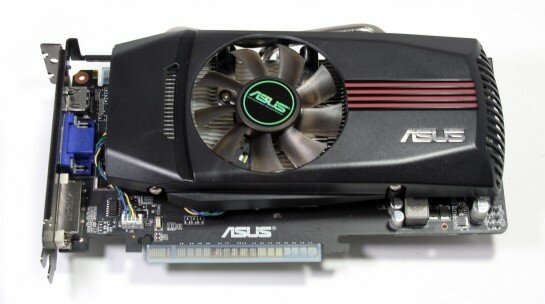
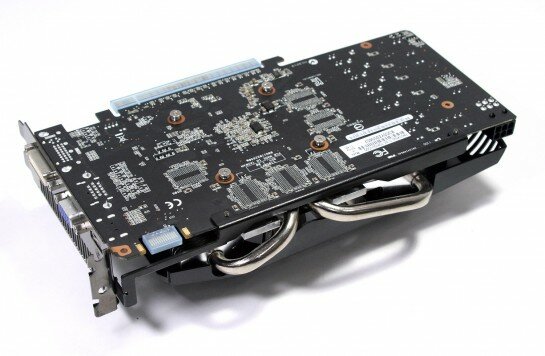



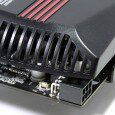
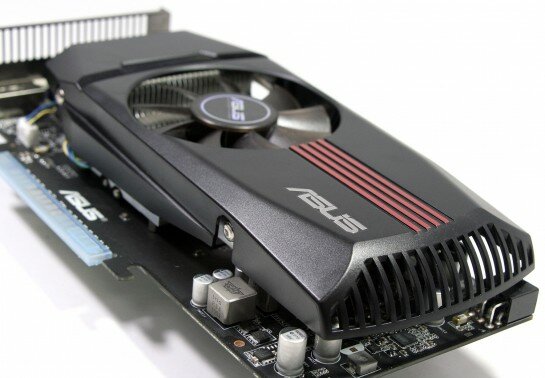


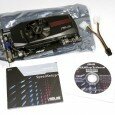

Nick Holland
Nick Holland – Portability and PC gaming are essential to Nick’s life. He’s enjoyed the latter since a very young age – eschewing consoles for customizability of a PC (with the finest backbones like the Asus P3B-F and A7V133) and the feel of a keyboard and mouse. As soon as he could afford a notebook he got one and things have rolled on from there into sleek DTRs (desktop replacements) netbooks, smartphones and he’s already eyeing up the latest tablets while trying to think up an excuse to own one. After writing about all things tech for several years it is only natural he sought to join the already awesome TiS team.